
"It's a great huge game of chess that's being played—all over the world—if this is the world at all, you know." -Lewis Carroll, Through the Looking Glass
Click here for more articles on the Plandemonium.
Apologies for taking longer to push out an article on this interview than usual, but I had more to think through, and a long trip in between. John Cullen (not his real name as he explains) has done some interesting work. He also has a fantastic hypothesis about it. I wanted to think through the implications of the data he presents in order to lay out some basic thoughts that could be built on. I had no idea this would become a long-winded article, so here is…
Executive Summary: By the data, the pandemic is/was an explosion of pneumonia. Counterintuitively, this corresponds with the disappearance of influenza [to surveillance]. We examine a few hypotheses about why this might happen, making what seem like important observations, but without declaring conclusive results.
Sorting Through Hypotheses
John has done some excellent and interesting work. However, I think there are flaws in his story, and I think he made the mistake of aiming his communications early at journalists rather than finding a good pool of smart people to bat ideas around with. This also led him not to tighten his facts at the definition level, which I'll get to.
Here is John's primary hypothesis as I interpret it:
There were two pandemics: one influenza and one coronavirus. The influenza may very well be the Spanish flu strain revived.
Whoa, Bessy!
John has data that is consistent with his hypothesis, but I think that he has not done a good enough job of defining the complete set of hypotheses consistent with his data. Suppose there are numerous hypotheses consistent with the data John presents (and there are), how do we decide which one(s) most likely reflect reality?
The simple answer is that we investigate further, but to the extent that we stop and make subjective estimates on the probabilities of each, we should lean toward the ones that require the least complex conspiratorial machinery—at least at a threshold that seems like an economic balance. In other words, I'm leaving the door open to conspiracy (because you're simply a fool if you believe the word was invented for something that doesn't exist), but I recommend against selecting for hypotheses that require more expensive or complex machinery.
Now, let's consider the following hypotheses:
A novel coronavirus spread around the globe.
A novel influenza virus spread around the globe.
On a binary yes/no basis, there are four possibilities:
Yes novel CoV. Yes novel flu.
Yes novel CoV. No novel flu.
No novel CoV. Yes novel flu.
No novel CoV. No novel flu.
While I lean toward 2, I do want to do my best to set aside my biases as I think there is an interesting case for 1, and even cases for 3 and 4. Understand that it would take a book to cover the evidence and logic distinguishing all of these, so I'll try to focus on some important thoughts.
My John Cullen Interview
A little over two weeks ago I interviewed John Cullen, and this was an interview that nearly didn't take place. There is a lesson in biases and cognitive dissonance therein.
The reasons this interview nearly never happened are twofold: (1) John's primary hypothesis needs to be generalized and remolded to a class of hypotheses that fit his data, and (2) John gave a first pass at explaining his "two viruses" hypothesis (one influenza, one coronavirus) to Jonathan Couey, Nick Hudson, Duncan Gonchar, and myself nearly a month ago before I (or we?) was ready to take his thought vector and project it onto broader thought spaces. That conversation took place after John first talked with Steve Kirsch on a couple of recorded meetings (here and here). He also talked with Jonathan Couey three weeks ago (here) outlining much of the evidence he has gathered. After all of that, I was not convinced of his hypothesis of a deadly influenza virus circulating largely due to my belief that a large portion of the 2020 carnage was iatrogenocide—planned negligent care combined with directed early virus treatment nihilism. In my mind, we do not need an influenza virus to explain the excess deaths in 2020.
But I had not fully dismissed John's hypothesis at least in part because I believed that some of his evidence actually supported my Big Picture view of the situation. His story of the Spanish flu being a potential culprit triggered my cognitive dissonance shielding, so I did not at first think through how his data stands without that narrative attached. His data does reinforce most of what I've come to believe, but I'll get to that. It is perfectly consistent with the iatrogenocide hypothesis.
Much of the purpose of this article (aside from sharing the interview) is to make some minor corrections or challenges to John's story, then in fairness give a broadened version of his hypothesis the fairest look.
Corrections I would like to make to John's points:
John called the Spanish flu the "blue death", but it was actually the "purple death".
The PNI category is not defined as he seemed to believe. We'll get to that.
Definitions Matter: What is PNI?
John is absolutely correct that the excess mortality during the pandemic tracks with the CDC's pneumonia and influenza (PNI) statistic very closely.
So, the question is whether the pneumonia cases are due to SARS-CoV-2, influenza, or possibly something else?
Now, John's presentation makes an incorrect assumption that the PNI statistic implies influenza is an ingredient in each PNI case. This is where John's discussion lacks completeness at a foundational level. This does not mean that his hypothesis is necessarily incorrect. It just means that we need to do more work to see what set of hypotheses are consistent with the data. This is not entirely John's fault (except that he should have reached out earlier to more scientists and smart people to discuss the details with). It may be that the CDC creates such an obfuscating categorical definition for the purpose of manipulating public understanding of the actual risks of each. (I think so.)
This whole "X and Y" categorization gets tricky. In logic, we interpret "and/or" as with sets above:
The set "X and Y" is the football-shaped intersection in the diagram above.
The set "X or Y" is all the colored region (the union) in the diagram above.
However, in conversation, people often use "and" to mean the union. People also use the exclusive "or" to mean the union minus the intersection (just the non-overlapping portions of the circles), often where no intersection is defined (as in "black pieces and whites pieces" on a chessboard, "stars and planets", or "rainbows and unicorns", maybe).
So, which is it?
We get our answer from the CDC. Sorry for the lack of font quality from their site tables:

Let me zoom in on the numbers in the "influenza", "pneumonia", and the "pneumonia and influenza" columns in case you can't see them well:
As we can see, the third column is the sum of the first two! This means that the deaths in the P&I category are not people with both (intersection) pneumonia and influenza, but in fact died of one or the other (as if the intersection is null) of the conditions. This is the exclusive "or", which is the Venn union minus the intersection.
John's presentation demonstrates the general confusion further by showing how the PNI numbers are presented in different ways, at different times. This is important! He shows the CDC modeling PNI mortality by assuming hospitalized and non-hospitalized proportions to be the same—that's quite an assumption! In an interview over at The Defender Show, Meryl Nass explains that the real number of deaths due to the flu may be as small as just 3,000 annually. That's consistent with the proportion in the numbers I found in the one data set above. It's pneumonia that does nearly all of the killing. Further, it's not clear (at least from basic data) how much influenza infection opens the body up to pneumonia, or whether the body being weak and susceptible to pneumonia leads to infection. (I'm open to being wrong about this point, and If I'm wrong, please send me that research that clears up this cause/effect question.)
The Influenza Hypothesis
It is remarkably strange that, according to the World Health Organization (WHO), the influenza virus just sort of…disappeared for a couple of years before coming back later. It beggars belief! The problem in figuring out what happened is that we have so much evidence of lies, misdirection, and deceit that our attention isn't easily kept open to the fact that our explanations haven't yet accounted for all the information.
Why? Why in Pfizer's name did the flu just sort of…take a break?
Well, maybe it didn't!
Okay, okay, I know what many people are probably thinking at this point: "We knew that already. A lot of COVID-19 cases were really just the flu." And I suspected that myself at times, but it's not enough to have suspicions—particularly when there are numerous hypotheses consistent with the known data. Also, there is no doubt that the symptom spectrum—most particularly the loss of blood oxygen—clearly did change. Meanwhile, the number of people suffering respiratory illness actually declined. I'll come back to these points in turn.
John's primary point is that an influenza could have been circulating all of this time that was simply hidden or otherwise invisible to the usual surveillance. And if the circulating influenza changed enough to evade surveillance, it may very well have changed enough to cause different symptoms. Or did the interplay between influenza and bacteria somehow change? I'm not biologist enough to know how perfectly or not that I'm asking these questions…
Forget for a moment the possibility that this might have been the Spanish flu, revived and escaped/released (for which there is only indirect/tertiary evidence). Ultimately, what we need to think through is how the WHO lost track of the flu.
There are a few possibilities:
Testing for influenza is centralized enough that assays could have been rigged to miss it.
Testing for influenza stopped being conducted.
A novel influenza strain appeared that dodges traditional surveillance. This might be the result of a lab leak or release. The goal might even have been to design an influenza that would confound the usual testing methods.
Other?
Leaving aside whether or not such an invisible flu is a Spanish flu derivative, specifically, one obvious question that pops up is whether there was a coordinated cessation of influenza surveillance (testing). If this requires conspiracy (hush your mouth!)…I'm happy to entertain conspiracy theories because I believe there are many real conspiracies (we created the word…for a reason). But the broader the requirement of participation for a conspiracy—especially including parties with incongruous goals—the less reasonable I judge the conspiracy theory. In fact, just two parties with disparate goals should tank any subjective probability of the proposition by up to orders of magnitude. But it's possible that many nations were given/sold surveillance systems/kits that were somehow sabotaged? Eh, I still need serious evidence…
While thinking the problem through with friends, including Jonathan Couey and Charles Rixey, we noted differences in specimens tested by the CDC (from here and here):
When I see a single positive test from a four-digit number of tests, I tend to think, "That's probably the false positive. There's probably essentially nothing out there. Why continue conducting more tests?" So, the lower amount of testing could represent a perceived statistical lack of need for further testing. However, it could also represent a cessation of testing in nursing homes and hospitals. But could such a targeted demographic shift in testing happen the same way in every nation on Earth?! That seems unlikely, but if there is evidence, please share it with me.
Next, note how different the 2019-2020 flu season—judged by "influenza-like illness"---is from other seasons.
The triple-peak is weirdly different from almost all other viral wave patterns I've ever seen. Even between the peaks, that was a bad season, as Cullen pointed out. But then ILI moves to levels similar to prior years. The only difference is that the numbers just never come back at all (until two years later). This is consistent with a novel pathogen taking longer to reach rural America after sweeping through more dense and connected urban populations. But nothing in the graph alone distinguishes well between most of the competing hypotheses.
Note that queries from the military health database show ambulatory reports of respiratory illness collapse in 2020 and 2021, even when COVID-19 cases get added into the total (regardless of whether respiratory symptoms are presented). However, hospitalization rates for those illnesses rose a bit from 2019-2021 relative to 2016-2018. This is consistent with other data sets I've seen.
Hospitalizations have been closer to normal, however, with a bit of a spike in 2021. Perhaps more interestingly, hospitalizations per ambulatory report (still DMED) mostly trended upward starting in 2019.
Of course, this may relate to nothing more than telling people not to do anything to treat their viral infection illnesses until they're in need of hospital care. Again, I see nothing in this data that makes me prefer any of the competing hypotheses.
In general, I still prefer the simpler hypothesis of a single novel virus as opposed to two. But if that virus is influenza, it might very well be that guys like Ralph Baric knew how to crank out an infectious coronavirus clone with the spike as an identifying marker in order to confuse everyone. One way or another, we should examine reasons we might prefer the novel flu hypothesis. One of those is that the suppressed drugs of chloroquine and hydroxychloroquine are derived from quinine, which was historically field tested with success against the Spanish flu and other influenza outbreaks.
I am also still trying to interpret the sad case of Tammy Bay who had low oxygen, tested negative for COVID-19, but seemed to be treated like a COVID-19 case at the hospital with what could be interpreted as a disturbingly motivated protocol designed to keep her immobile.
Is it just possible that the hospital had seen some such cases, and somebody there "knew what to do" with her despite her lack of coinfection? Perhaps most people with the novel flu were understood to get a coinfection with the CoV, but a few people were genetically resistant?
Virus Interference vs. Virus Coinfection
I never bought into the "viral interference" story that suggests that SARS-CoV-2 pushed influenza out of human transmission.
"Wow, what a novel virus? Can it do my taxes, too?!"
Viruses move around a body like asteroids in a solar system. Sure, they can come into contact, but they're relatively small objects in a relatively vast region of space. And stifling the ability for a virus like influenza for two full years means smothering transmission receptors to the point that even a segmented virus like influenza can't find a way to permute and mutate for adjustment.


People may think that infection spurs the immune system, which then handles other infiltrators. But those are the cases of people whose healthy immune systems fight off all of both invaders. Infection gets bad (for any virus) precisely when the body is unable to mount the appropriate immune response. Technically, "virus interference" is a term that includes coinfection odds. It makes the most sense that the presence of one pathogenic virus increases the odds of infection by another because either the infected body has compromised defenses (such as disrupted interferon activity) or because the first infection weakens the body's ability to fight off another one properly and completely.

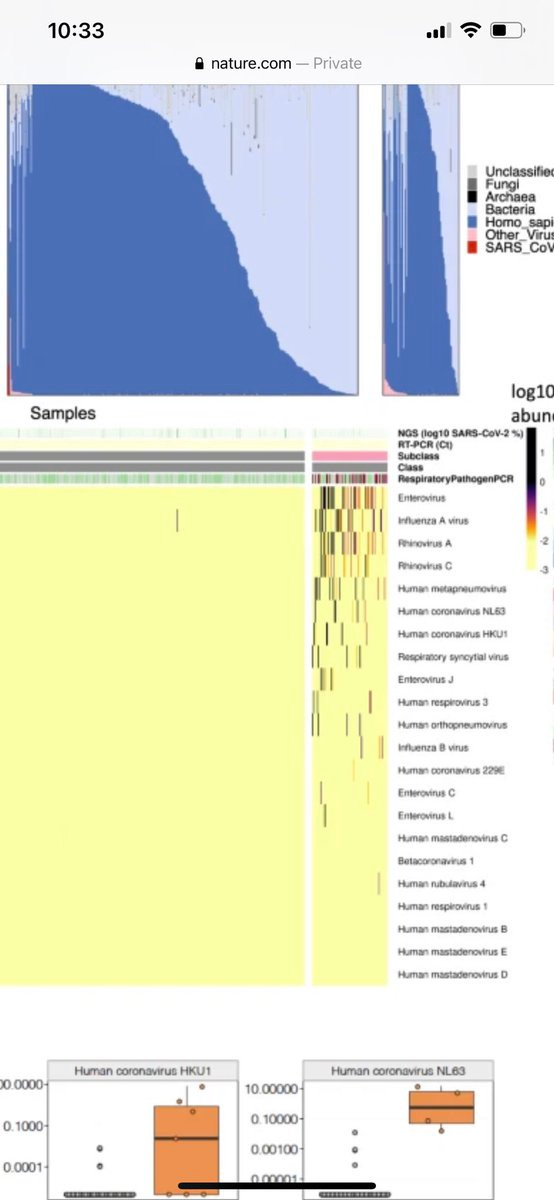
Was all the pandemonium for show, or perhaps did authorities not know what they would have on their hands because there really was one runaway virus in addition to an engineered one?

Or were the constructed hospitals and medical boats simply health security theater?
The Outlier Australian Data May Speak to Lingering Questions
Now, let's take a look at what went on in the continent of Australia.
We are told that Australia was essentially COVID-19-free due to harsh lockdown and quarantine policies, though something clearly swept through older populations during the 2019-2020 flu season resulting in excess mortality. Were this SARS-CoV-2, I have a hard time believing that these were the second and third nations (aside from China) to achieve near-zero-COVID.
Influenza typically hits the Australian continent before hitting the West. Might a novel influenza have already done its damage in Australia while the following year was simply a charade?
I'm not entirely certain what it means yet, but Australia's 2022 re-emerging influenza data is largely "untyped", meaning that it is neither identified as type A or type B influenza. Type B still hasn't returned much around the world, tallying a low single-digit percentage of the positive tests globally. Are we going to find out that some altered Type B influenza virus escaped from a lab?
While John's presentation cannot answer that question, it does open the door to asking it.
Other Thoughts
Early in our conversation, I mentioned a game I saw somebody play on their phone that I thought might have used the same mapping software John says he developed at Oracle, and that was used by Johns Hopkins. A couple of viewers identified the game as Plague Inc., and the map is not the same. However, it is not impossible that the data from such a game was observed by those studying (ahem) pandemics.
John also does research into the Vegas mass shooting from a few years ago, which is one of the more odd potential false-flag-ish events in recent memory. The investigation was so obviously bungled that one can't help but to wonder what was up. There was gunfire away from the primary shooting site, too, which is completely unexplained in official reports. While watching some of John's videos, I emailed him and said something like, "You know, this might have been an assassination attempt on MBS (Saudi leader)," before realizing that's the theory he presents in his videos. It makes perfect sense at this moment when Saudi Arabia and other OPEC nations are talking with BRICS nations about dropping the (petro)dollar! Add this to the list of reasons I believe that World War E already started a few years ago, and that the plandemonium is really just a piece of the chaotic whole.
I am under no illusion that I've thought through all of this perfectly or completely. Comments and additional data observations are welcome.

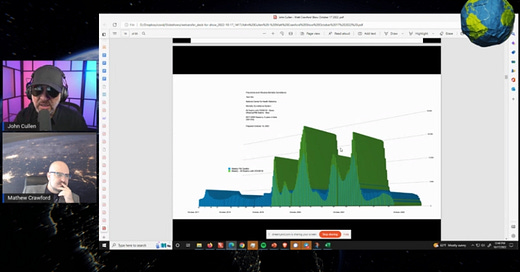



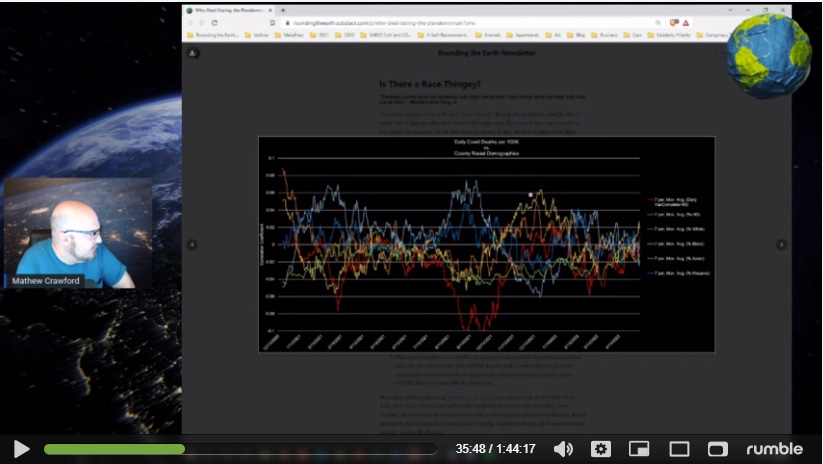
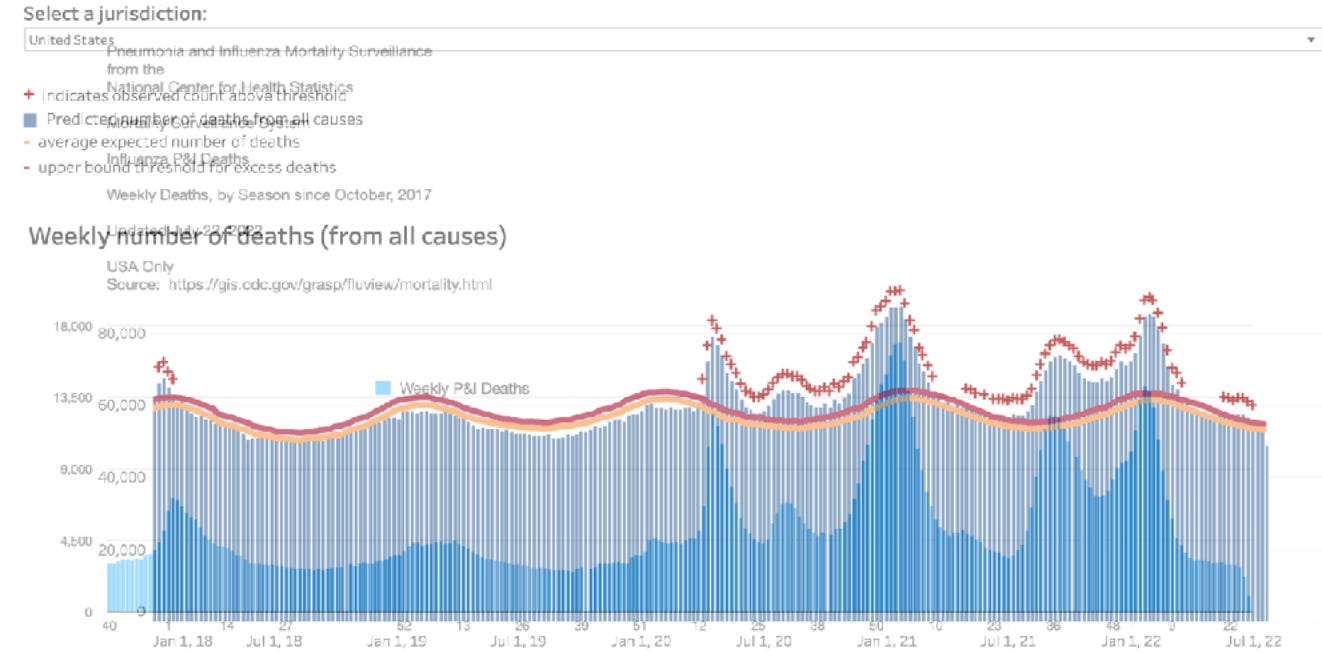


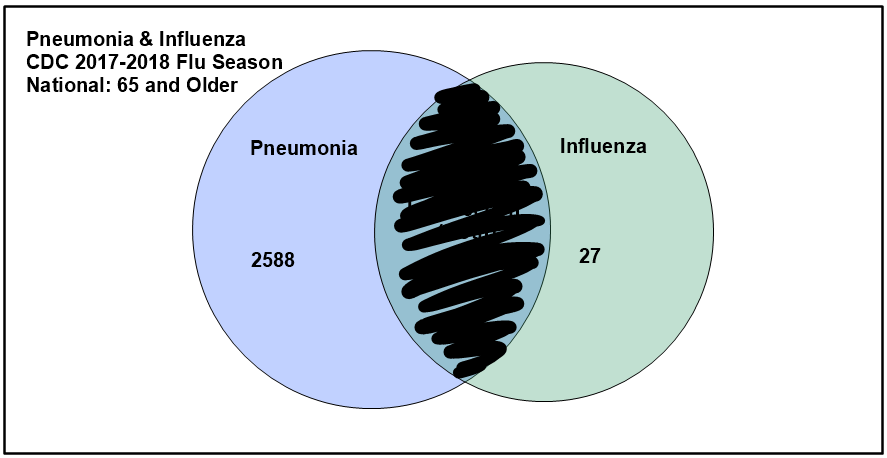
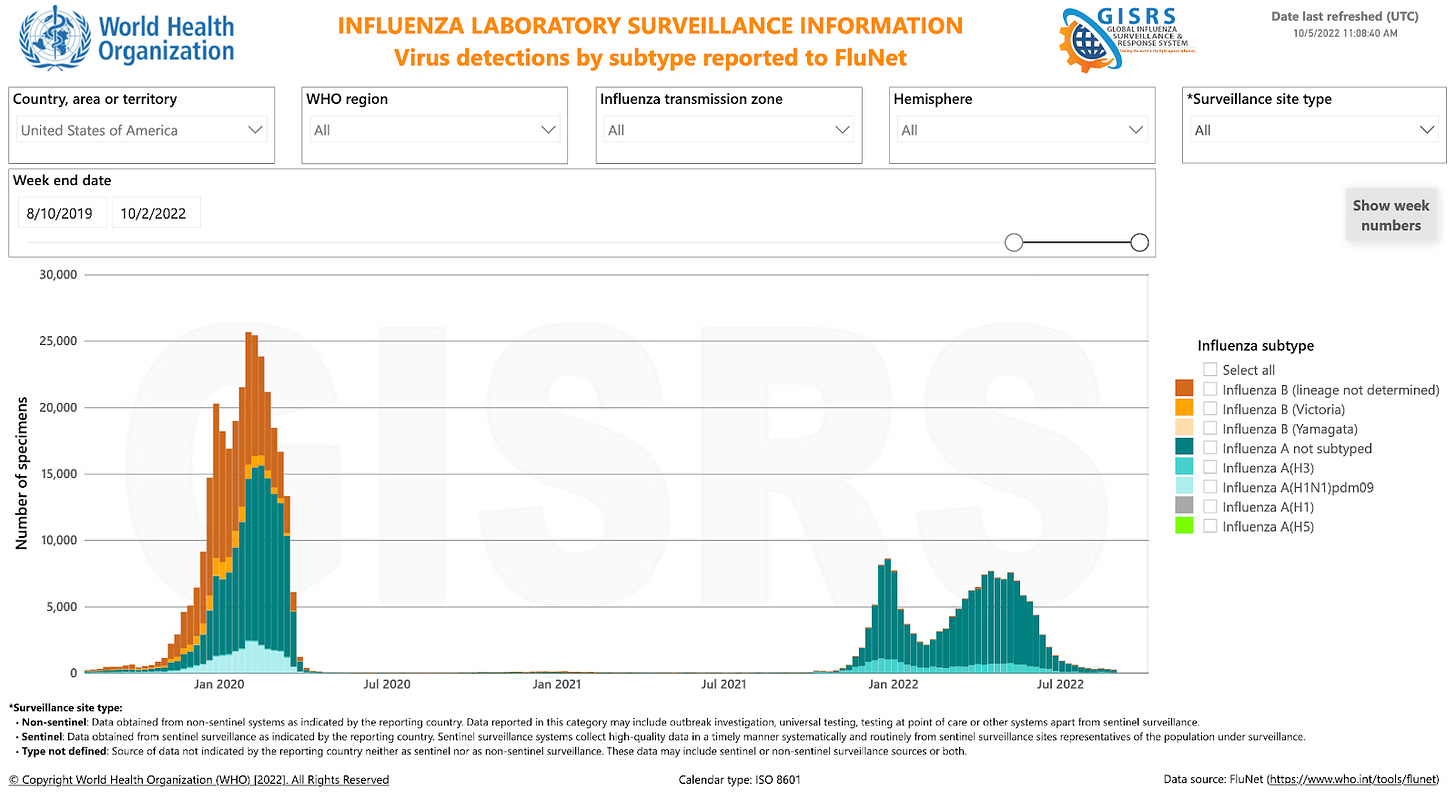
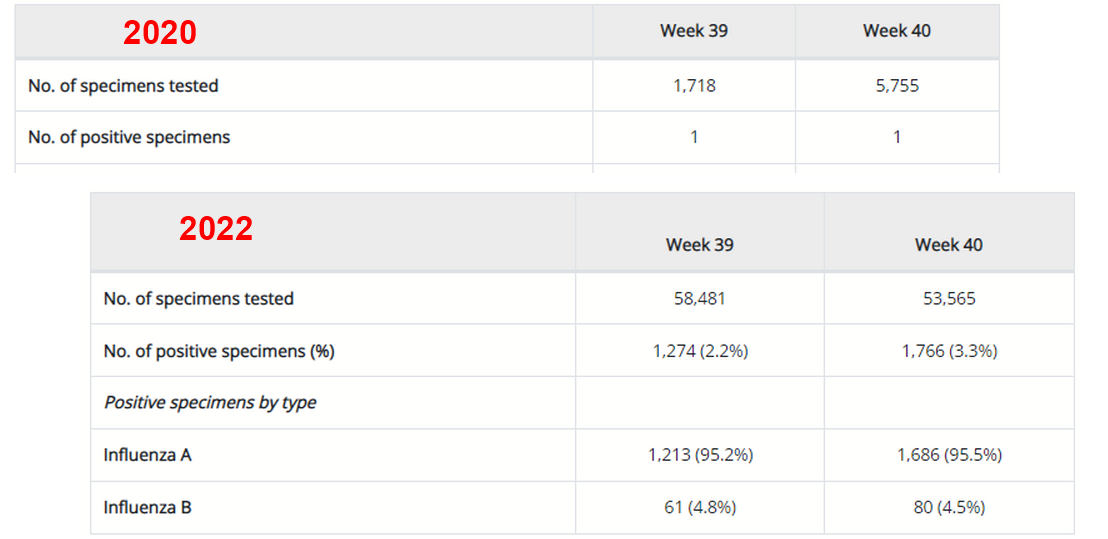
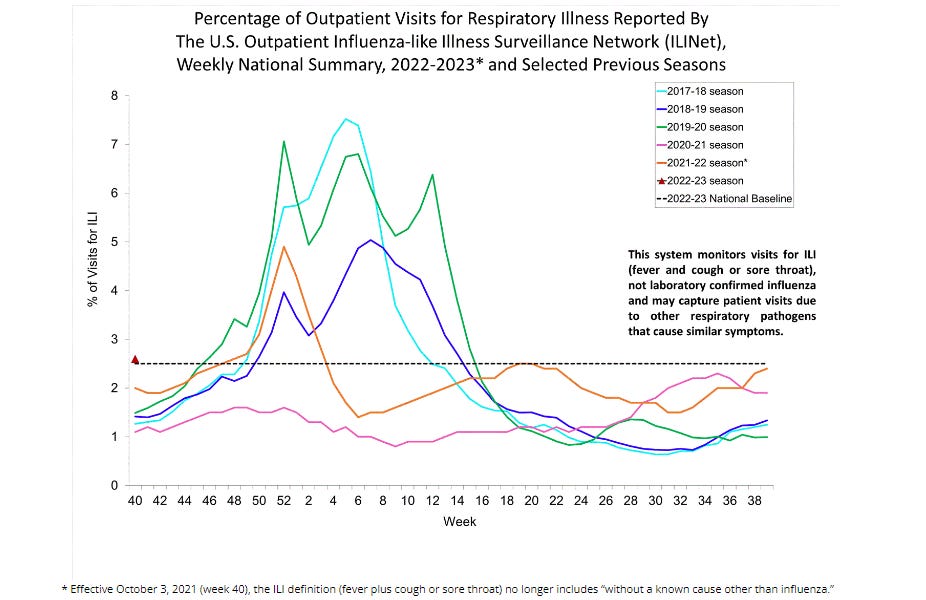

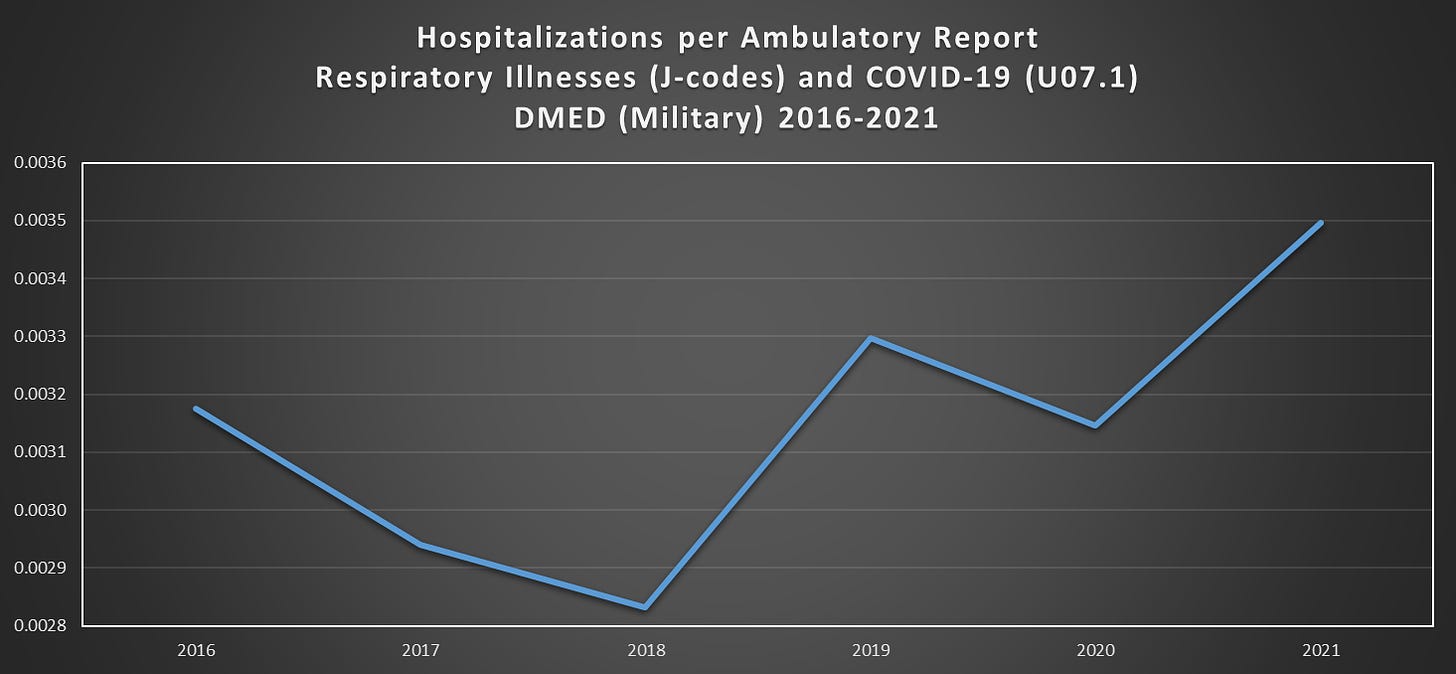
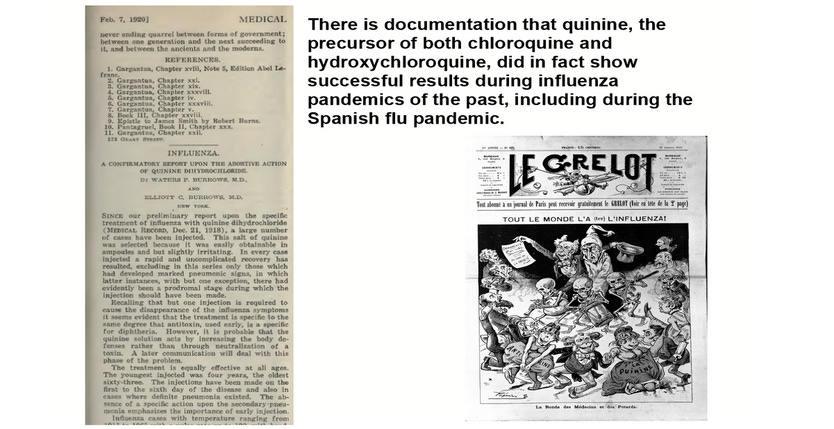

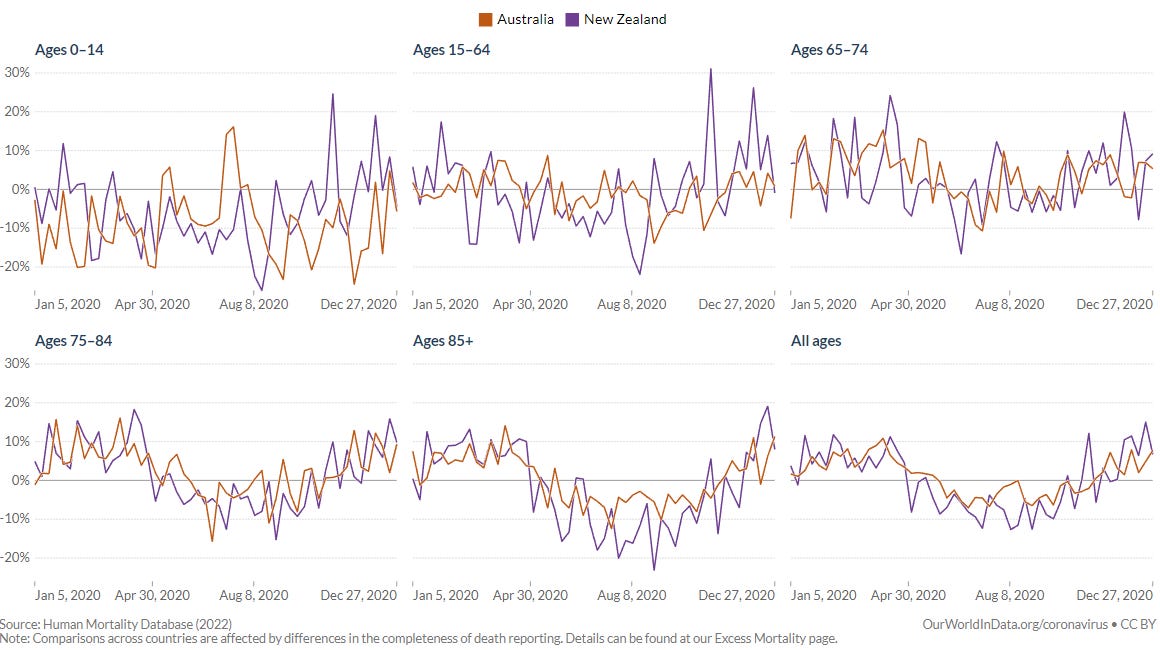











Nice work. Right now I'm trying to track which experimental vaccines were given and what pathogen(s) were in them in 1918, as compared to what was found in the 1980s study of what people had actually had died from. What we know from the study, it was a bacterial pneumonia and the CDC with Fauci as one of the co-authors tried to cover this up by saying it was a bacterial induced virus that was the real killer. They obviously don't want a correlative link between the vaccines given to all the military personnel at induction and the specific bacteria in the experimental vaccines and the influenza and pneumonia they are causing. Then we need to check with what the WHO is approving every year for the annual influenza vaccines and see if there is any correlation there as well.
Between the childhood, travel, war and flu vaccines Big pharma and the Fasci as I like to call them, those who make their living selling goods and services to the various Governments and NGOs, have literally made a fortune, of course placing even the liabilities for any harm they do, also on the taxpayers. (YJCMTSU). You Just Can't Make This Shit Up, yet there are literally tons of historical data and evidence now that proves it's the vaccines and our bodies naturally ability to shed the various pathogens and infect others. You know they've knew about this for decades, because they have tried so very very hard to cover it up.
Under all the fascist programs, they have now bankrupted much of the civilian populations around the world, with all their centralized planning by the central bankers and NGOs, like the U.N. and NATO that the fiat currency system is now effectively broken and they are trying to implement a period of social chaos, so they can have time to implement their proposed CBDCs. This appears to be their goals, and I am of the opinion that they will not be able to pull this off without substantial pushback from the people. We've seen their experiments with Austria, Australia and now Canada with gun control, as well as the push in the U.S. The problem with CBDCs is pricing just like the fiats and they don't want a bi-metallic system because of the restrictions it placing on their agendas. We are in the war(s) of our lives and even truth is part of it.
Just some loose thoughts since there's nothing to critique about your overall approach to the topic -
Flu was never assumed to be annual before PCR. If you told any flu researcher before PCR that flu "mysteriously" disappeared for two years, they would say, "What do you mean, mysterious?" Here is Andrewes in 1953, 20 years after helping to nurse the first human-to-ferret passage: "The behaviour of influenza has seemed so erratic as regards its occurrence in both time and space that it has fascinated epidemiologists for many years. ... Since about 1933 influenza A has come to many countries in out- breaks every two or three years, with a tendency as time has passed for the peaks to come less frequently and to attain lesser heights." https://www.ncbi.nlm.nih.gov/pmc/articles/PMC2554199/ In the pre-PCR way of thinking, if it wasn't an "epidemic" year (lots of observed simultaneous flu), you weren't likely to succeed in passaging anything to ferret / egg and the virus wasn't actually around.
Even up to the 90s it was understood that flu is ephemeral and strange. In fact viral interference (one virus boosts cellular anti-viral immunity) was a dominant theory for why strains sporadically die out. Webster, to whom more understanding about flu is owed than any other human: "Why Do Some Strains Die Out? ... The reasons for the sudden disappearance of previously circulating human strains are unknown. ... Virus disappearance may be explained by a mechanism for systematic interference between competing strains; i.e., infection with one subtype of virus elicits cross-protection against a different subtype." https://www.ncbi.nlm.nih.gov/pmc/articles/PMC372859/
Since viruses reflect network effects it wouldn't matter if some vulnerables still exist. The raising of the alarm in the population after one virus makes a break-in leaves the other virus unable to do same. Meanwhile sporadic transmission may still occur but not observed simultaneous illness as with an "epidemic" year.
So the only mystery in 2020/21 is why PCR stopped lighting up, not why the virus as an agent of observed waves of illness disappeared.
This might all lend to a theory of a "non-PCR-targeted" release but the argument against that is, see above, flu = mysterious. I don't think anyone is capable of intentionally displacing PCR-targeted flu with a non-target strain because we don't even understand how the flu's genes survive from one wave to the next. It is like if trees somehow grew without seeds - then we obviously wouldn't have a clue how to intentionally "seed" a different tree.
RE testing rate changes, a review was recently published https://www.medrxiv.org/content/10.1101/2022.03.31.22273236v5 - a pretty big drop in tests in the US, aligning with anecdotes, but not elsewhere.
Triple spikes and "immunology 101 wave" defiance are not so strange for flu. The arrival of H3N2 in UK in 1968 was very lumpy https://unglossed.substack.com/i/44779108/case-study-influenza-uk 2018/19 isn't actually that different from 19/20 in shape, just has a hump in the place of the third spike, which still defies wave.
So overall I think the conservative approach to the "flu mystery" is to realize that flu has always been a mystery.
RE the excess deaths in Australia, percentage will make things a bit wonky since baseline is getting lower in Regular Human Winter and higher in Regular Human Summer.